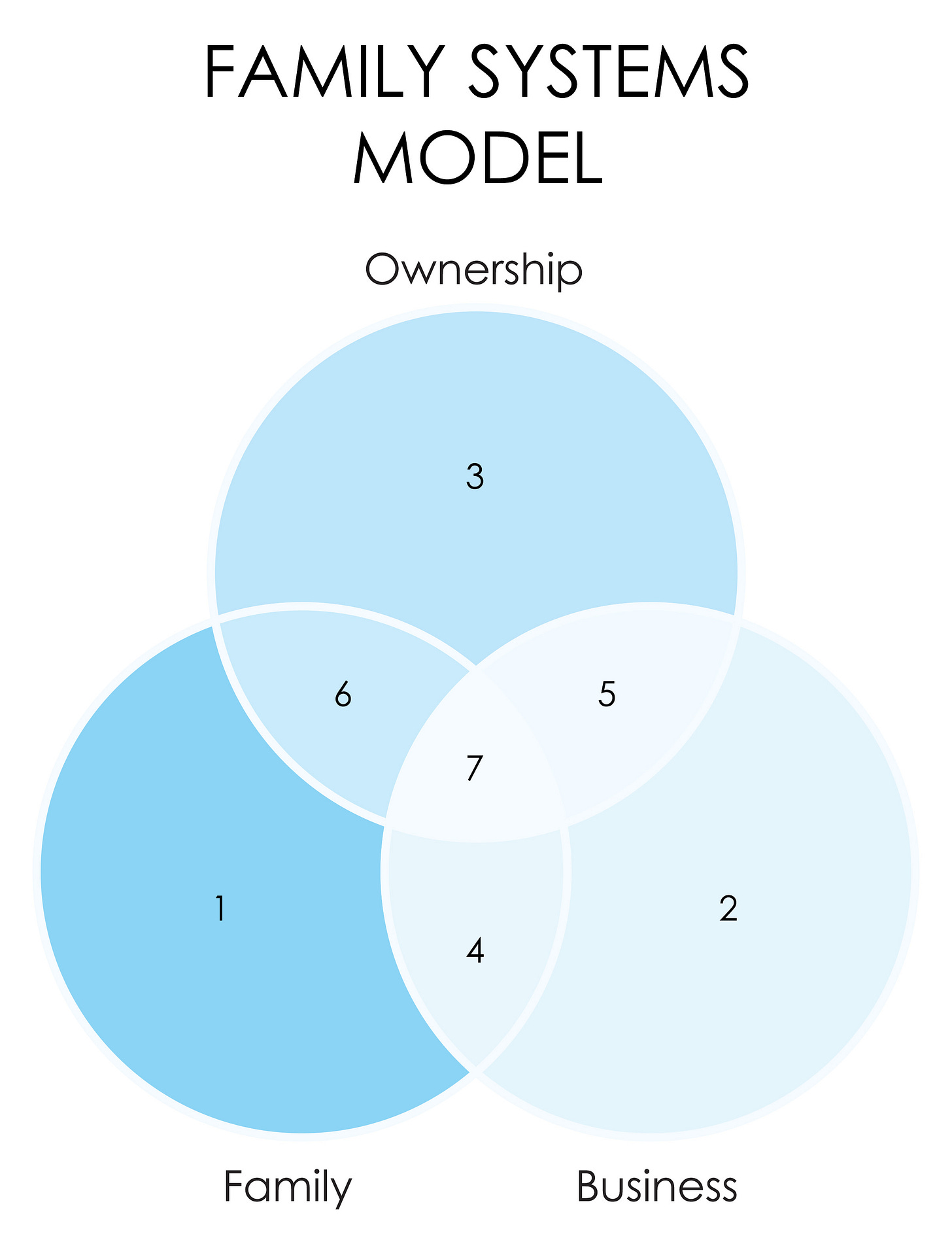Today’s topic is the single most important framework in family enterprise. It’s only one of the tools you should know, but it’s the first one you should learn and one that everyone should know. I’ll tell you how it was created, why it’s important and how you can use it to your benefit.
This is an Insights post. Published on Tuesdays, these posts are useful and educational for everyone. They are also free, because we believe everyone should know why family business is better.
Like all our content, this post is also available in Spanish.
Two ways to think!
Reductionism
Reductionism is the idea that you can understand something by taking it apart into simpler pieces, then taking those pieces apart into their component parts, until you get to the point where you’re looking at something very simple, like a screw or a tube, whose purpose and function you do understand. Then, you gradually put things back together and gain an understanding of how all those parts work together.
There’s nothing wrong with that, and it’s useful in many areas of life. But there’s another way of thinking that is sometimes necessary, and it’s even more powerful and valuable: systems thinking.
Systems Thinking
In a system, BOTH the parts of the system and the relationship between them are critical. You simply cannot understand how the system works or what it will do just by understanding the pieces that make it up.
Music is a system. Is music just the notes being played? No.
In any song or instrumental piece, the notes matter. But the timing of the notes, the speed at which they’re played, and the spaces between them, ALL make a difference. If you put all those notes in some kind of bucket, and then played them in a different order and at a different speed, would you have the same song? Not at all. Both the parts (the notes) and the relationship between them, are important.
Everything in nature is part of a system. If wolves kill too many deer this summer, the few deer that survive will be hard to find next year, so many wolves will starve. When there are fewer wolves, many more deer will thrive. Then, with lots of deer wandering around, the few wolves will find easy prey and the wolf population will increase. And so on.
You cannot understand the system’s behavior without understanding BOTH the parts (wolves and deer) and the relationship between them.
Hopefully those examples make it really clear! If not, send me a message to let me know and I’ll add more explanations and content next Tuesday.
The history of “family systems”
Family-owned businesses have existed for all civilization: from the town blacksmith to the local nobility, essentially all children took their father’s business in their turn.
But until 1978, academics described family businesses with two simple, overlapping circles: one for the family, and one for the business. The part where the two overlapped was the family members who worked in the business and how the business and the family affected each other.
But something important was missing. Often, this simple framework couldn’t explain the interactions and tensions between parts of the system.
In 1978, John Davis was a first-year doctoral student at Harvard Business School, and he was the research assistant to Prof. Renato Tagiuri who taught in the Owner President Management (OPM) Program at HBS.
Most of the people attending OPM owned family companies. As they interviewed and studied many of these companies, they realized that ownership was a key component of the family/business system, and one which wasn’t captured in the existing model.
Ownership is one of the things people value highly, AND it guides a great deal of the decision-making processes at any company, AND it’s something that people will fight about if necessary to get what they want and what they think is “fair”.
So Tagiuri and Davis drew the following three-circle model, first published in Davis’s doctoral thesis in 1982, and the “Family Systems Model” was born:
A story of two siblings
Remember that the system’s behavior depends not only on the parts of the system, but also on the relationship between them.
Family conflict can often be completely prevented simply by keeping in mind that relationship and how it changes our views, our priorities, and our interests.
Imagine Emily is running the family’s successful business. She’s in position 7 in the diagram above: she’s a family member, an owner, and she works in the business. Her brother, Steven, is also a family member and an owner, but he does NOT work in the business, so he’s in position 6.
OK? Make sure you can see that on the figure above.
Emily has an incentive to reinvest as much of the company’s profit as possible. The more she reinvests profits, the more the company will grow… and the more important her job becomes… and the more she gets paid… and the more status she gains in their community.
This does not mean Emily will act unethically: in most family companies, Emily runs a very efficient, very successful, very profitable business and it makes sense to reinvest a large part of the profits. But note that her INCENTIVE is to reinvest as much as possible, regardless of what the other owners (or the rest of the family) may think.
Steven has a very different incentive: he wants to make sure every penny of his dividends are invested next year into the most profitable projects, regardless of whether they are in the family business or not.
To Steven, the idea of reinvesting the company’s profit is attractive because the family company DOES provide a great return… and its success grows the family’s reputation and status (including his own)… and it takes very little work from him to get those benefits.
But he can also simply buy stock in Apple, Nvidia, or Berkshire Hathaway. He can invest in a friend’s startup, that hopes to be the next Uber. He could invest in many things, and his desire to reinvest specifically in the family company is much lower than Emily’s.
So Steven starts asking for reports, and metrics, and accountability. He asks for owners to be shown which projects will get funded next year, and what their profit projections are. And he may even ask for dividends to be distributed by default UNLESS stockholders approve of Emily’s planned projects.
This makes Emily furious, because it adds a lot of work for her. So she might start criticizing Steven for being disloyal, or a parasite; and Steven in turn may start to criticize her for being spoiled or tone-deaf.
Neither of those is true. They simply face different incentives and rewards.
And knowing WHY this happens is key to finding better solutions to the challenges we often face, without fighting.
Why it matters to you
Imagine the model is a human body. We can think of the family circle as the heart: this is where ethics, values, passion, and feelings come from (both good and bad). The business circle is the lungs, providing the oxygen we need to stay alive. And the ownership circle is the nervous system, which communicates both information and commands across the body efficiently.
One of the most important reasons why you want to keep in mind the three circles is that MANY of the conflicts families fall into are caused simply by not understanding the different incentives, pressures, and priorities we all face when we are in different parts of the diagram. And just by knowing that, you can eliminate most of the pressure!
Another reason why you it matters is that, when one of the circles gets hurt, it affects the other two. But the flip side is also true! Whatever else is going on, when you can improve something in one circle, it will also help you improve the other two. You can use the system’s interdependence to your benefit, simply by being aware of it.
This model is only one tool. You’ll need many tools and frameworks in your life and in your family system. But this is the first one you should learn, and one which you will use consistently for the rest of your life.
Please let me know in the comments, or by leaving me a message (you can also just reply to this email) if you have any questions about this. It’s really important that you understand this tool well, because it’ll really help you.
And if you found this post useful and interesting, please share it with others!






